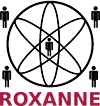A Generic and Flexible Platform for ROXANNE Systems Development
Analysis of large volumes, ever-changing, noisy and heterogeneous audio data, images and videos, multilingualism, numerous formats implementation, degraded language is quite problematic to deal within security and defence systems. To address these issues, many tools are available on the market today but (1) each one covers only a part of the requirements, (2) requirements are not necessarily fully covered and (3) several tools implement the same functionality. How to select the best ones? How to link them to get a better answer to the needs? How to make them interoperable? How to use them together in an effective way?
Airbus has designed its Multi-source and Multi-media analysis solution through the Concept of Generic Architecture which enables the regrouping of multimedia processing software products and presenting them in different possible configurations, based on one common and generic architecture.
This approach allows the testing and validation of all requested configurations on the same platform during the project. In terms of operational benefits, this approach gives a maximum flexibility for tailoring the deployment of configurations to the different missions.
The proposed platform relies on a (Micro-)Service Oriented Architecture as the core paradigm for the design and integration of components. It is constantly evolving to meet the internal needs of Airbus (used as technological basis of its intelligence products) and collaborative projects in which Airbus is involved (H2020, French R&T projects, etc.). The ROXANNE system is relying on this architecture.
The ROXANNE modules are composed and can interoperate through the use of a generic platform which provides an integration facility and enables orchestration and information exchange. The high level functions, offered to users through applications, are achieved by putting together services and calling them in the right sequence to supply a processing chain. The proposed platform also supports communication between modules and provides interoperability mechanism including a pivot format and normalized interfaces.
The granularity of the services is one of the main concerns during the design and development of the ROXANNE system. In order to provide a flexible solution, the service design respects the following features:
- Loosely-coupled: It means that services are as autonomous as possible and that dependencies between components should be avoided.
- Coarse-grained: A service provides a coherent set of functions and should hide implementation complexity.
- Standardized interfaces: A service implements one or more standardized interfaces from the service taxonomy which themselves reuse the generic service interfaces. It gives access to the methods provided by the service.
- Integrable: A service is easily integrated in a global application and used in a chain with other services.
The Roxanne system will be released in 3 versions mid-2020, mid-2021 and early 2022. In order to prevent technical issues and integration bottlenecks, the integrated system will be updated regularly following an incremental integration process. Once a component is ready, it can be integrated into the system.
The system will be demonstrated on real world use cases provided by the LEAs members of the ROXANNE consortium. Some of these use cases have already been identified; such as investigations on drug trafficking, financial crimes, counter-terrorism and child abuse.
For any more updates on the said topic, please follow ROXANNE the project on LinkedIn and Twitter.
For further details on ROXANNE, please visit the project website.
This project has received funding from the European Union’s Horizon 2020 research and innovation programme under grant agreement No 833635.

